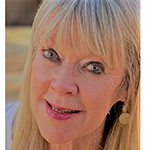MonkeyPox: What We Know Right Now
In late July, the World Health Organization declared monkeypox a public health emergency of global concern. On August 4, the Biden administration declared monkeypox a public health emergency in the U.S. Those actions, understandably, increased anxiety about the newest health issue. What is it? How widespread? Am I at risk? What to watch for? Is it deadly?
Monkeypox: The History
Monkeypox isn’t new; the viral infection was first discovered in 1958 in monkeys kept for research. The first human case was found in 1970. Experts still don’t know for sure the source of the disease. Some suspect African rodents and perhaps monkeys as the culprits.
Monkeypox: Transmission
Monkeypox spreads by close skin-to-skin contact, such as during sex, by touching contaminated objects such as towels or by respiratory secretions (typically among household members of those infected). Experts can’t say yet how often it’s spread by respiratory secretions. Walking by someone at the market is not risky, they say.
Monkeypox: The Symptoms
Symptoms begin within 3 weeks of exposure, including a rash in the genital areas or elsewhere that begins as pimples or blisters and worsens, with chills, fever, fatigue and headache, among other complaints. The illness can last for 2-4 weeks.
Monkeypox: The Impact
How many? Who? How severe? As of August 5, 7,510 confirmed cases of monkeypox have been reported in the U.S., according to the CDC. While one report found that 98% of those affected in this recent outbreak are men who have sex with men, infectious disease experts stress that it should not be labeled a gay disease.
“There’s nothing about the virus that would prevent it from infecting someone else,” says Marguerite Urban, MD, a professor of medicine and infectious disease specialist at the University of Rochester Medical Center, who has seen cases of monkeypox. While it is more common in adults, children can also contract it. Overall, Urban says, ‘’the fatality rate is very low, less than 1%, and probably significantly less than 1%.”
‘…it’s less common with age.’
Another bright spot, at least for older adults, she says, is that it’s less common with age. For instance, in California, less than 1% of all cases as of August 4 were in adults 65 plus. About 5.8% were in the 55-64 age group. Why? “One possibility is that the population that is older was vaccinated for smallpox in their youth,” Urban says. The viruses are in the same family. “Some speculate that there is some residual effect of early childhood vaccination for smallpox.” Smallpox was eradicated globally by 1980, and routine smallpox vaccination in the U.S. stopped in 1972, so the younger population has not had the smallpox vaccination. However, Urban stresses that a prior smallpox jab is no guarantee against monkeypox.
Monkeypox: Treatments
Treatment & Vaccine: Not everyone needs treatment, Urban says. Many times, the infection is mild. There are no treatments specifically for monkeypox, but the CDC says treatments used for smallpox can be tried, since the viruses are similar.
One vaccine, JYNNEOS, is approved for the prevention of monkeypox, and another, ACAM2000, is allowed under a special protocol. However, ACAM 2000 can be risky in those with compromised immune systems from issues such as HIV—which includes a high percent of people in the MSM population. So JYNNEOS, even though its supply is not yet adequate, is preferred.
About 1.7 million Americans are at risk for monkeypox, the CDC estimates, but the delivered vaccine doses, at about 600,000 as of early August, fall far short. JYNNEOS ‘’is a live virus [vaccine] but doesn’t replicate, so there are no significant side effects,” Urban says. The recommendation is to get the vaccine within four days of exposure, although it is allowed within 14 days, she says, to reduce the chance of infection. It’s meant to be given as 2 doses, 4 weeks apart, but experts are discussing whether one shot might provide enough protection and alleviate the shortage.

Kathleen Doheny is a Los Angeles-based independent journalist, specializing in health, behavior, fitness and lifestyle stories. Besides writing for Senior Planet, she reports for WebMD, Medscape, Endocrine Web, Practical Pain Management, Spine Universe and other sites. She is a mom, mother-in-law and proud and happy Mimi who likes to hike, jog and shop.
Doheny photo: Shaun Newton
Want to know more about staying healthy? Join us for live virtual fitness classes, lectures and discussion groups on health topics. Learn more here!
This article offered by Senior Planet and Older Adults Technology Services is for informational purposes only and is not intended to substitute for professional medical advice, diagnosis, or treatment. Always seek the advice of your physician or other qualified health provider with any questions you may have regarding any medical condition or before starting an exercise program. If you think you may have a medical emergency, call your doctor or 911 immediately.
Consumption smoothing is a financial planning concept developed and tested by economists. It refers to the somewhat aspirational idea…
Copyright © 2024 Retiring & Happy. All rights reserved.







